- Home
- Helen Humphreys
The Ghost Orchard
The Ghost Orchard Read online
DEDICATION
In loving memory of Joanne Page
EPIGRAPH 1
When eating a fruit, think of the person who planted the tree.
—VIETNAMESE PROVERB
EPIGRAPH 2
Each autumn a dozen little red apples hung on one of its branches like a line of poetry in a foreign language.
—EDWARD THOMAS
CONTENTS
Dedication
Epigraph 1
Epigraph 2
THE INDIAN ORCHARD
ANN JESSOP
USDA WATERCOLOUR ARTISTS
ROBERT FROST
THE GHOST ORCHARD
Appendix: The Imagined Discovery of the White Winter Pearmain
A Glossary of Lost Apples
Acknowledgements
Notes
Photo Section
About the Author
Also by Helen Humphreys
Copyright
About the Publisher
Last fall I was eating wild apples, and a close friend of mine was slowly dying. I was thinking a lot about death and friendship, and overtop of that was the sweet, dense taste of the White Winter Pearmain: the crisp of its flesh, a juicy surprise, each time I bit into it.
The apple tree stood beside a log cabin. The tree is dead now, killed by the harsh winter, its lace of dry branches a filigree through which I can see the green spring trees plumping the field edge when I come here to walk the dog.
The cabin is long deserted, its windows smashed out by weekend partiers and the loft now inhabited by a colony of raccoons. The teenagers and the raccoons have treated the house in much the same way—destroying the walls and shitting in the corners. The raccoons upstairs, the teenagers down. When I drove out there tonight, the raccoons tried to warn me away from the building with a chorus of yelps.
But I’m not interested in the house. It’s the tree I came for.
Just last year, when the tree was still alive, I ate its apples all autumn. They were yellow-skinned, with a faint pink blush on one side where the sun had touched them. They were late apples, ripening in October and still edible into December. They also had an extraordinary taste—crisp and juicy with an underlay of pear and honey.
The tree was mature but not ancient, the last holdout from an old orchard, perhaps, or planted by the former owner of the property. There had probably once been other apple trees nearby—earlier-blooming ones so that the fruit could be eaten and cooked from late summer until Christmas. A late apple will sometimes keep in storage right through winter.
The White Winter Pearmain is thought to have come from Rome, but it was first documented in Norfolk, England, in AD 1200. From there it moved to America in the late eighteenth century, and while it is not a popular heritage apple today, it is still being grown and is prized for its late fruiting and for its taste. Because the apple has a hint of pear—hence the “pearmain”1 in its name—it has a complex flavour, and it is this complexity, this overlapping of apple and pear in the same fruit, that has led to it being called the best-tasting apple in the world.
When I was growing up on the outskirts of Toronto, there were rogue apple trees in all the nearby fields. We climbed them and made forts in them and pelted other children with the hard unripe fruit. The scent in autumn in the fields was the scent of rotting apples and the sound was the buzz of wasps over the soft, sticky pulp on the ground. There was a particularly old apple tree up the street from my house. Its low branches made it easy to climb, and my friends and I hauled up wood and nails and made a series of platforms in the tree, using an old tire and a rope as a makeshift elevator to move us and the building supplies up and down. In my melancholic teenage years, I would sit in the branches among the apples, thinking my gloomy thoughts and listening to the wind rustle the leaves around my perch.
Back then, I took the fact of the apple trees at the edge of our neighbourhood for granted. Now, I realize that the immense size of that one tree I used to climb probably meant it was at least a century old—which is ancient for an apple tree. I wish I had been interested enough at the time to think of investigating what variety of apple tree it was, because all the varieties have a story attached to them, and because, in the nineteenth-century heyday of apples, there were upwards of seventeen thousand different varieties in North American orchards.2 Today there are fewer than a hundred varieties grown commercially, and often less than a dozen varieties for sale in our grocery stores. When we think of apples, we tend to think of Granny Smith, Gala, Red Delicious, Honeycrisp, and perhaps something with a little more exoticism, like Ginger Gold or Orange Pippin. When we think of tales about apples, we think primarily of the over-mythologized Johnny Appleseed.
This is what the seventeen thousand different varieties have been reduced to.
There must be more to the story of the apple than the history that is so readily available. There must be a way to describe—simply and beautifully—the taste of an apple.
The presence of death brings life into sharper focus, makes some things more important and others less so. I couldn’t stop my friend’s death, or fight against it. I stood out by the log cabin and the dead tree that night and thought that what I could do was make a journey alongside Joanne—a journey that was about something life-affirming, something as basic and fundamental as an apple. I could take my curiosity about the White Winter Pearmain and use it as a portal to examine the lost history of some of the lost apples.
THE INDIAN ORCHARD
What makes apples so interesting is that like human beings, they are individuals, and their history has paralleled our history.
The apple is a member of the rose family. It originated some 4.5 million years ago in Kazakhstan, where, until the latter part of the twentieth century, there were still large forests of apple trees growing wild in the countryside.1 The fruit made its way to Europe via trade routes and was brought from Europe to North America by settlers in the seventeenth century.
Apples are not indigenous to North America. They were brought over by the European settlers who arrived on the continent in the early 1600s. An orchard was essential to the survival of the incomers because apples were hearty and could provide sustenance throughout the long winter months. In fact, at the beginning of the 1800s, America enacted a law saying that homesteaders had to plant an orchard of at least fifty apple trees during their first year of settlement.2 This law gave rise to many plant nurseries, established to furnish the settlers with the young trees they needed.
The recorded history of the apple in North America is the history of white settlement during the nineteenth century. It is the history of plant nurseries and cider orchards and fruit catalogues, as well as the slightly mad figure of Johnny Appleseed (John Chapman), traversing the countryside with his sack of seeds, planting trees for cider orchards and opening seedling nurseries to supply the settlers with young trees, called whips, so they could grow their own.
Apples can be propagated from seed, but the resulting tree will probably not resemble the tree from which the seed was taken. This is because each blossom on an apple tree is likely being visited by a different pollinator. So the bee that pollinates blossom A doesn’t necessarily visit blossom B, and that bee also carries on its body pollen from other apple trees it has visited. As a result, the mix in each individual apple is different and distinct, so the seeds of each apple on any given tree will be 50 percent from the tree of origin and 50 percent from another apple tree, perhaps even one of a different type. The only way to keep apples uniform is to graft on to a rootstock, and this is the method by which all apples are commercially grown. It was also the method used by early European growers and by North American settlers to produce reliable apple varieties.
When apples are
planted from seed, without grafting, no two trees will be exactly alike and often the fruit will be inedible “spitters.” But even an apple that’s no good for eating is usually fine for drinking, and orchards of ungrafted apples were often used as cider orchards. John Chapman, in giving and selling ungrafted apple seedlings, was supplying settlers with the makings for cider orchards, and much of colonial American life was probably experienced through a heavy alcoholic haze (which, quite frankly, might have made it more bearable).
Johnny Appleseed wasn’t the only one planting seeds. Most of the indigenous peoples were also cultivating apple orchards. In fact, “Indian orchard” was a common term, described in nineteenth-century dictionaries as “an old orchard of ungrafted apple-trees, the time of planting being unknown.”3 So-called Indian orchards were once literally everywhere in what is now the United States. In 1889 in Ohio, a Colonel Howard wrote in a letter to the Ohio State Board of Agriculture that when he was a boy, he had eaten apples that grew from trees on “Indian Island” and on the left bank of the Maumee River, and that many of the trees were at least a century old. He had also eaten apples from an old Indian orchard in the village of Nawash, and he planned a return trip there as an old man, to eat apples “from trees from which I picked fruit nearly three-quarters of a century ago.”4
There was a Tuscarora orchard in Oneida County, in the middle of New York State, that was planted around 1715 and was described as having several hundred apple trees in it.5 There was a Seneca orchard in the hamlet of Egypt in Ontario County, New York.6 The Algonquians had many orchards in Southern Ontario.7 The Cherokee orchards in the southern United States were so plentiful that a nurseryman named Jarvis Van Buren collected seedling apples from them in the 1850s to use for sale.8 The first commercial orchard in the United States was rumoured to have been started in Maysville, Arkansas, by a Cherokee woman who used African American slaves to do her labour. When the slaves were liberated after the Civil War, she was unable to work the land anymore. The orchard was subsequently purchased by a white settler, H. S. Mundell, who continued to operate it commercially.9
When the incomers were looking for a place to settle in the eighteenth and nineteenth centuries, land with an already thriving orchard was enticing. It is no accident that many of the white settlements sprang up where there was an indigenous orchard. But first, of course, the original owners had to be vanquished. The apple thus became, in its infancy in North America, a tool for colonialism.
In Lafayette, New York, the first white settlement was made at Haskin’s Hill, a little to the east of an Indian orchard, by a John Wilcox in 1791. Wilcox commandeered the orchard and sold the fruit to other early settlers. The orchard was over twenty acres in size, and its trees were planted in regular rows and were very productive.10
There was an Indian orchard in White Mills, Pennsylvania, and another in Buffalo, New York. Guilford, New York, was once the site of an Oneida apple orchard. Apple Creek, Missouri, was built on the site of Shawnee orchards. In Michigan’s Saginaw valley, there were apparently Indian orchards as early as 1750.11 Apple trees recorded by white settlers in 1824 were already at least sixty years old at the time of discovery, and they were “generally conceded to have been from seeds of fruit brought by the Indians from Canada on their returns from their annual trips to receive annuities from the British government at [Fort] Malden, Ontario.”12
The Indian orchard in Terre Haute, Indiana, dated from the early 1700s and was the site of a Wea legend. The legend concerned a young white woman named Lena, who for years had lived with a Delaware community on the banks of the Wabash River. She had been captured as a child and grew up as a member of the tribe, happy in her new family. In 1763, the Pennsylvania government wanted to forge an alliance with the tribes along the Ohio and Wabash Rivers; part of the agreement was that the Shawnees would try to return captured whites to their original families. A Shawnee brave named Nemo was dispatched to collect the captives from the Delaware village where Lena lived. She was reluctant to leave with him, but her Delaware father saw the futility of fighting the Shawnees, as well as the white government of Pennsylvania, and persuaded Lena to go.
The two travelled for weeks together, and in that time they talked and shared their feelings and fell in love. By the time they’d reached the Shawnee village where Nemo lived, they had decided that they wanted to marry and remain together. But it was illegal in the 1700s for whites and Native Americans to marry, and so, one night when everyone was sleeping, Nemo and Lena left the village to return to Lena’s Delaware home along the banks of the Wabash, where they would set up a life together.
The journey was arduous and included an encounter with three Miami braves, whom Nemo killed and scalped. When he and Lena arrived at the Delaware village, however, there was nothing left but the smoking ruins of the wigwams. There had been a fight within the community; Lena’s family had been killed, and those who remained had moved on. Undeterred, the couple built a wigwam and had a child. Lena planted some apple seeds, and a fledgling orchard appeared.
But the happiness of the couple was short-lived: a band of Miami warriors found their encampment and killed Nemo after a long and valiant struggle. Lena, in her despair, handed her infant son to one of the Miami braves and plunged Nemo’s scalping knife into her heart, to join him in death.
According to the legend, Nemo and Lena’s son grew up to be a warrior and fought alongside Tecumseh. The grave of the two lovers became a sacred place. In the spring, Shawnee maidens who crossed the orchard—for the trees had grown into a beautiful apple orchard—would place wildflowers on the grave, and all agreed to leave the trees alone so that the spirits of Nemo and Lena could use the apples as nourishment. The grave and the orchard became consecrated ground to the people along the Wabash. When the white settlers took possession of the orchard in the 1830s, they buried their dead there and called it Old Indian Orchard Cemetery.
One of the largest indigenous orchards was in what is now Geneva, New York. It was previously a Seneca village called Kanadesaga and was known as the “castle” of the Seneca—essentially their capital. There were extensive apple and peach orchards, as well as plum, mulberry, hickory, walnut and butternut trees. Squash and corn were also grown in profusion.13 And there was a Seneca burial mound near the village.
In 1779, Major General John Sullivan, with an army of some four thousand men, was sent by President George Washington to destroy the Six Nations and determine “at a single blow, whether white men or red men should hold domination over these fertile vales and along these streams, and over these lakes and mountains.”14 Sullivan and his men started out in June and made their way through the Finger Lakes region of New York State, burning out and destroying forty villages and towns belonging to the Iroquois nation.15
Before reaching Geneva, Sullivan’s army arrived at the small indigenous town of Chonodote, known as Peach Orchard, which was located near Cayuga and had “not less than 1,500 [peach] trees, thrifty, and loaded with fruit.”16 The soldiers set fire to the town and orchard, an act of destruction described by one as “the monotonous work of ruin.”17
Kendaia, also on the edge of Seneca Lake and known to the white settlers as Appletown, was destroyed as well. It was described by one of Sullivan’s officers, a Major John Burrowes, as having “the best houses I have seen and about 15 of them, with an orchard of seventy trees, to appearance had been planted fifty years.”18 The inhabitants of the town had fled two days in advance of the arrival of Sullivan’s troops.
The men arrived in Geneva on September 7, 1779. The wealth of the Seneca agricultural system was described by Reverend David Craft in an address about the expedition to President Washington:
Kanadesaga was a large and important town, consisting of fifty houses with thirty more in the immediate vicinity, and being the [capital] of the nation was frequently called the “Seneca Castle.” Its site was on the present Castle road, a mile and a half west from Geneva. The town was divided by Kanadesaga or Castle Creek . . .
Orchards of apple, peach and mulberry trees surrounded the town. Fine gardens with onions, peas, beans, squashes, potatoes, turnips, cabbages, cucumbers, water melons, carrots and parsnips abounded: and large cornfields were to the north and northeast of the town. All were destroyed on the 7th of September.19
Sullivan’s army eliminated the Seneca food source by girdling the apple orchards and burning the crops.
To “girdle” a tree is to cut a width of bark from its circumference, thus preventing the sap from rising to the branches. It is an effective way to kill a tree—and a cruel one, as the tree still looks alive, in that it is standing and any blossoms or fruit or leaves on it at the time of the girdling remain. It was favoured as a method of destruction by armies because it requires a lot less effort than cutting down a tree, saving the strength and energy of the men.
I have tried myself, mostly to failed effect, to grow a small orchard on a river property I have in Eastern Ontario. The winter before last was so cold that mice, tunnelling below the layer of thick ice that covered the ground, ate the bark around the base of my apple trees, girdling them. I was able to save one tree by wrapping duct tape around the damaged area; the tape acted as a substitute skin and allowed the sap to move from the roots to the branches. But the other trees died, and the frustration and dismay I felt at the sight of these otherwise healthy trees stopped by something so small as a mouse would have been, I imagine, but a fraction of what the Senecas felt at the killing of their orchards by Sullivan’s army. In early September, the apples would have been on the trees and almost ripe.
With the destruction of their land and gardens and orchards, the Senecas had no choice but to flee to Fort Niagara to appeal for protection and food from the British soldiers who were stationed there, and who had been their allies against the Americans in the Revolutionary War a few years earlier. The British tried to assist the refugees, but they simply didn’t have enough food to give the approximately five thousand people, two-thirds of them women, children and elders.20 The winter of 1779 was particularly cold, and many of the Seneca families starved or froze to death.

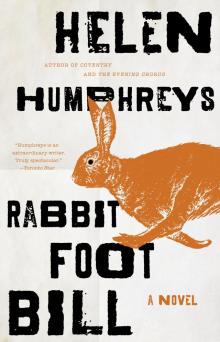 Rabbit Foot Bill
Rabbit Foot Bill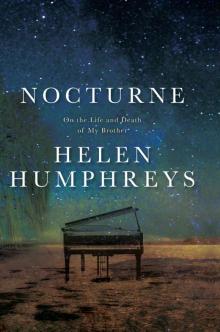 Nocturne
Nocturne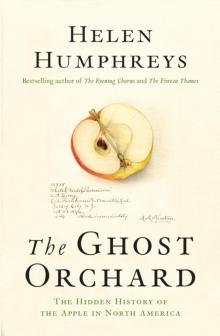 The Ghost Orchard
The Ghost Orchard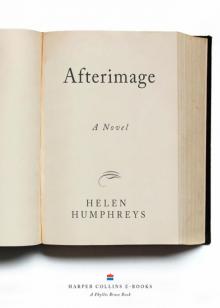 Afterimage
Afterimage The Frozen Thames
The Frozen Thames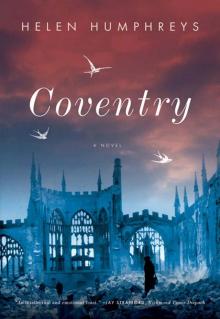 Coventry: A Novel
Coventry: A Novel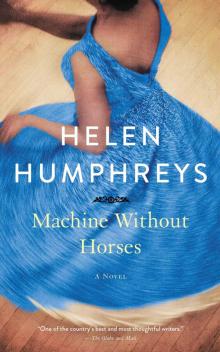 Machine Without Horses
Machine Without Horses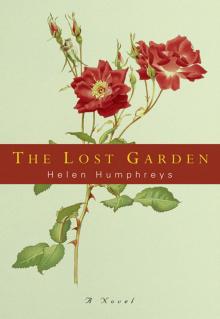 The Lost Garden: A Novel
The Lost Garden: A Novel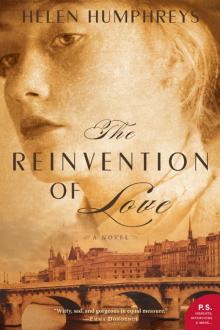 The Reinvention of Love
The Reinvention of Love Helen Humphreys Three-Book Bundle
Helen Humphreys Three-Book Bundle